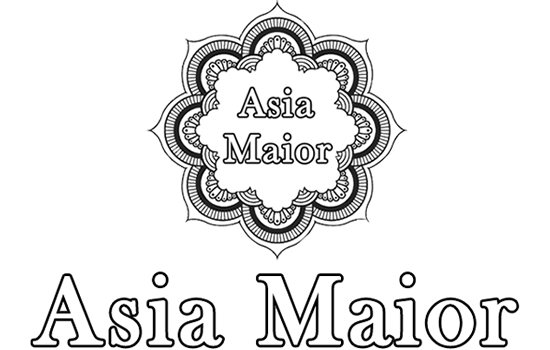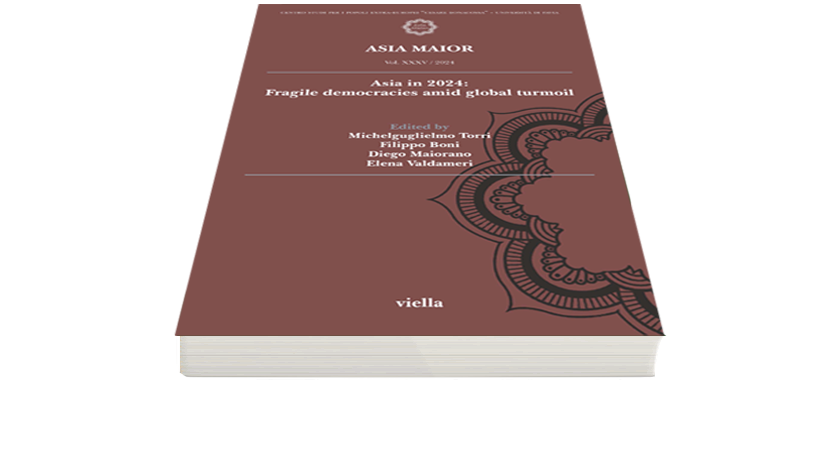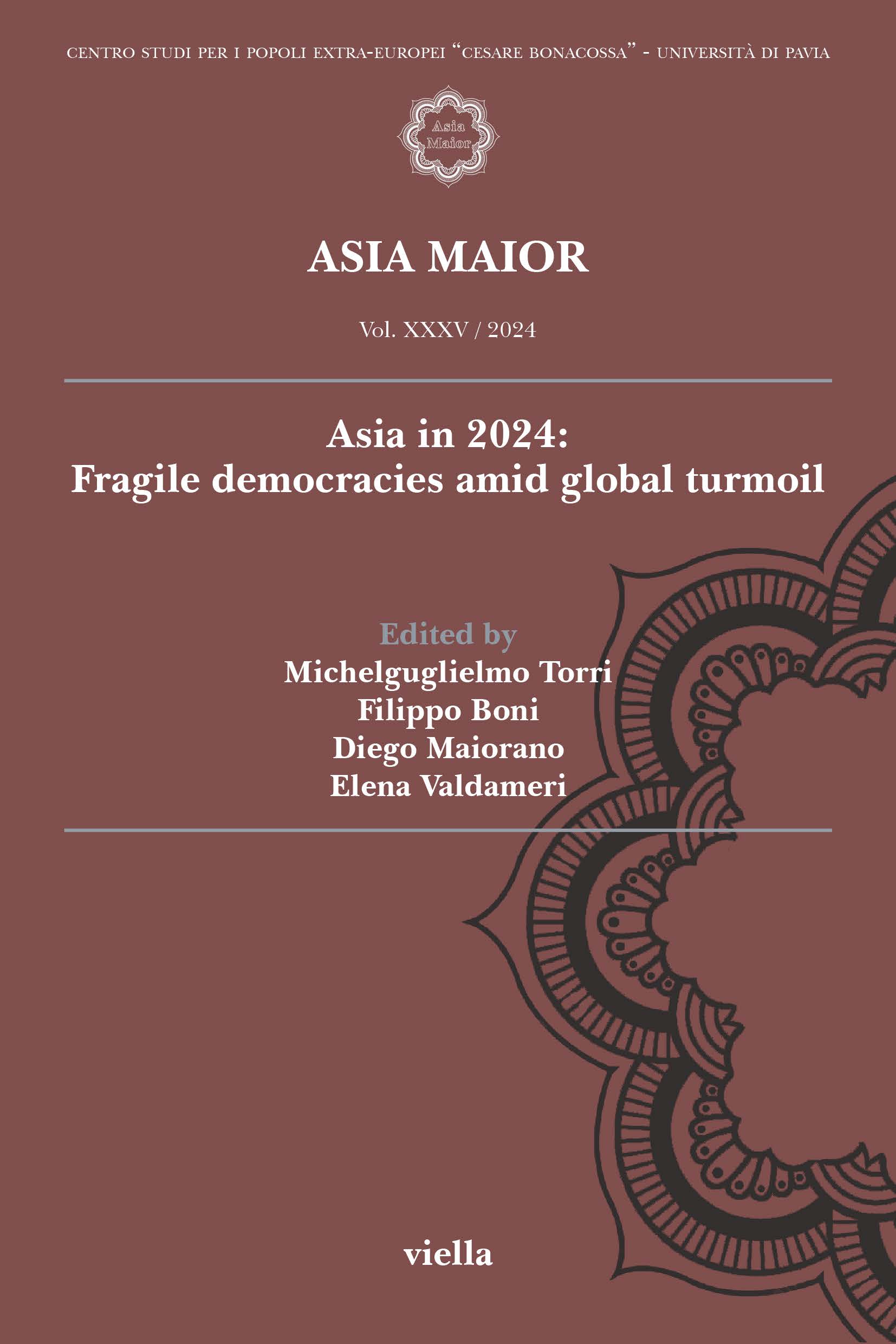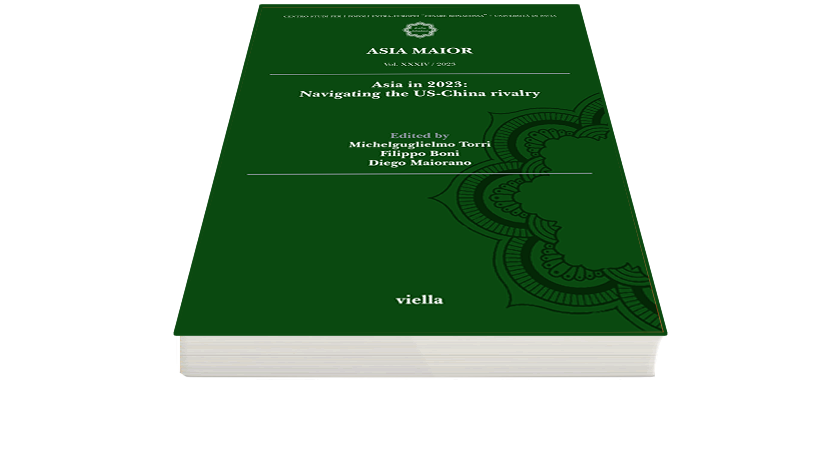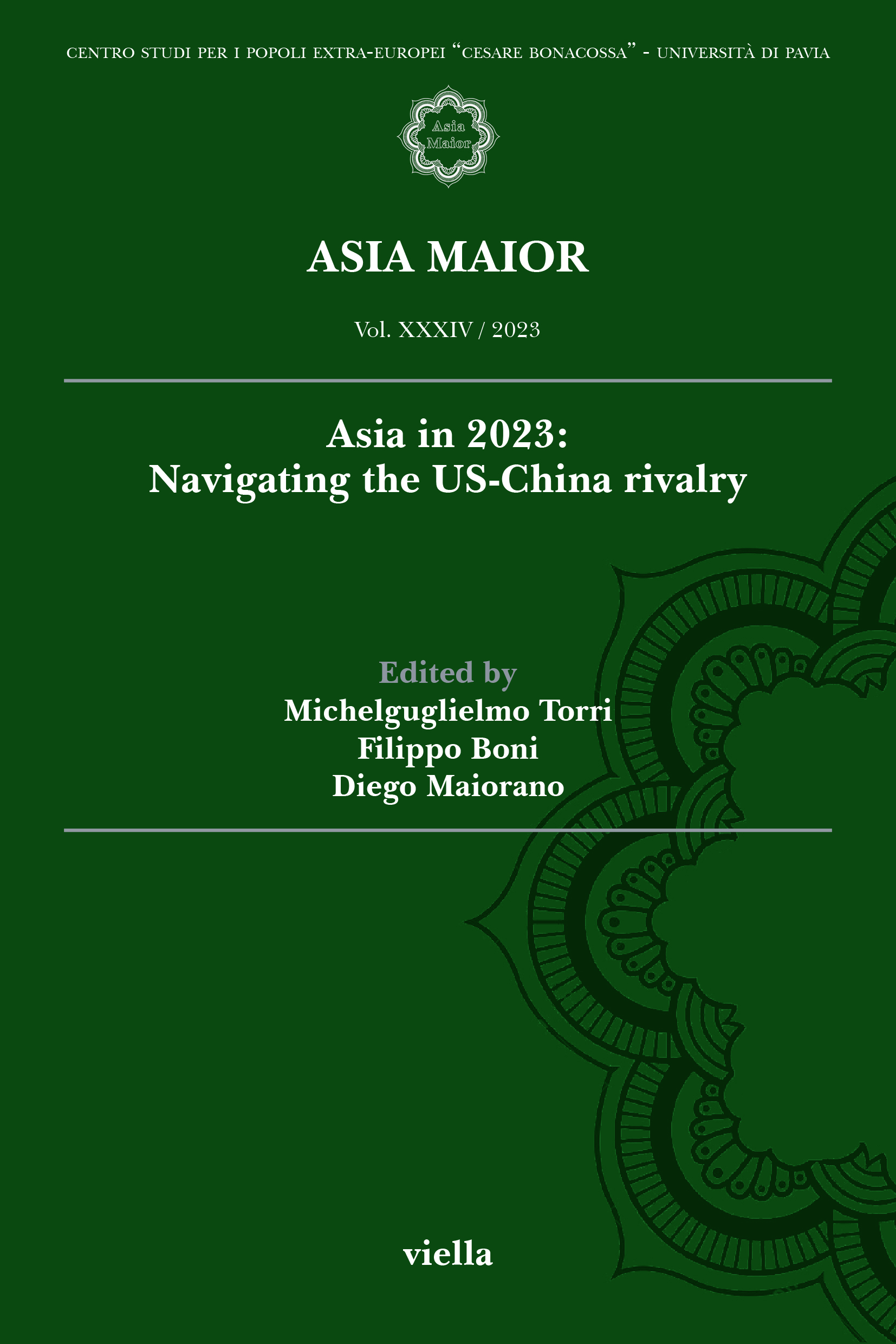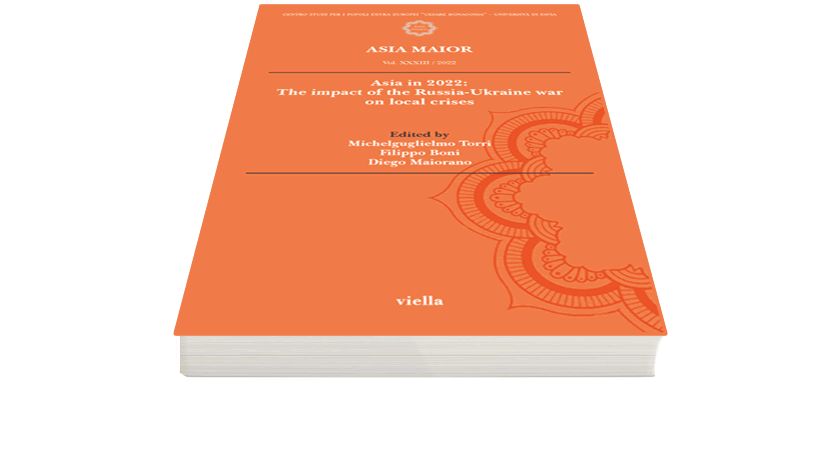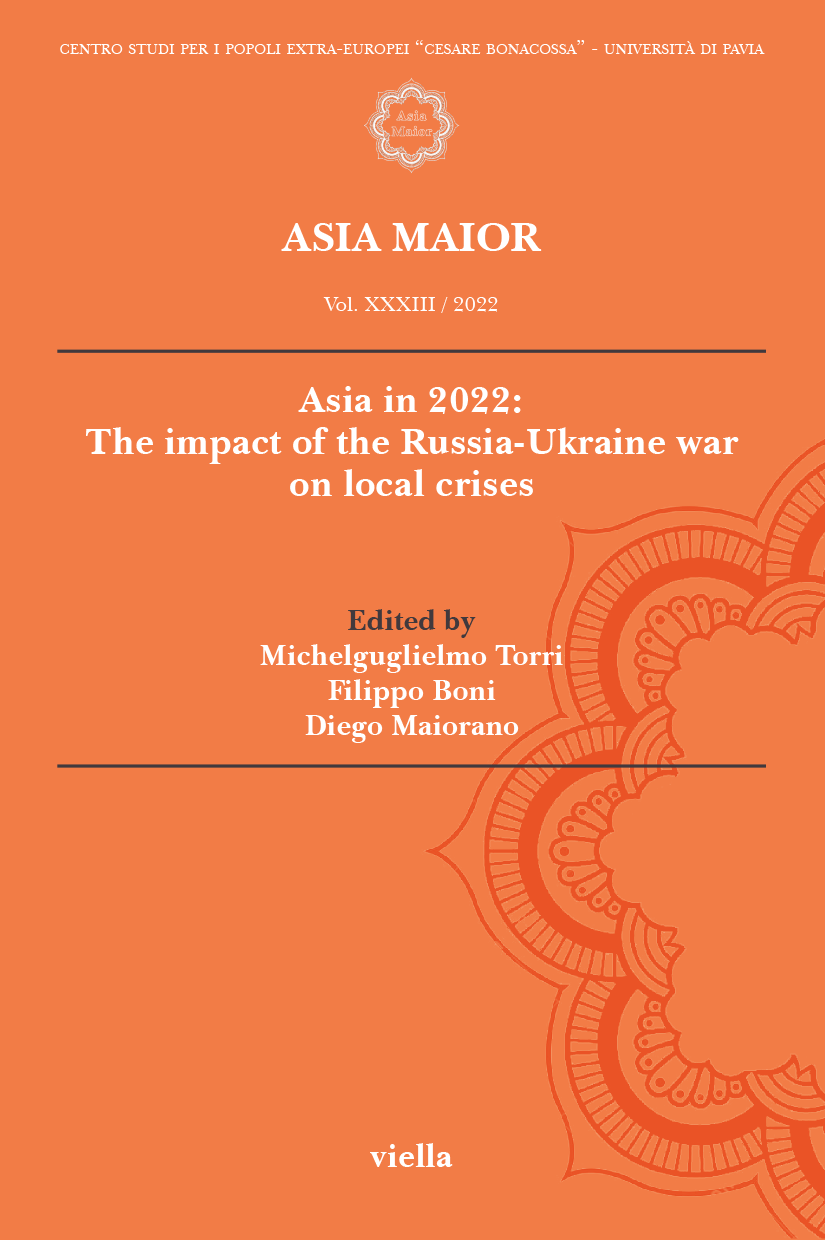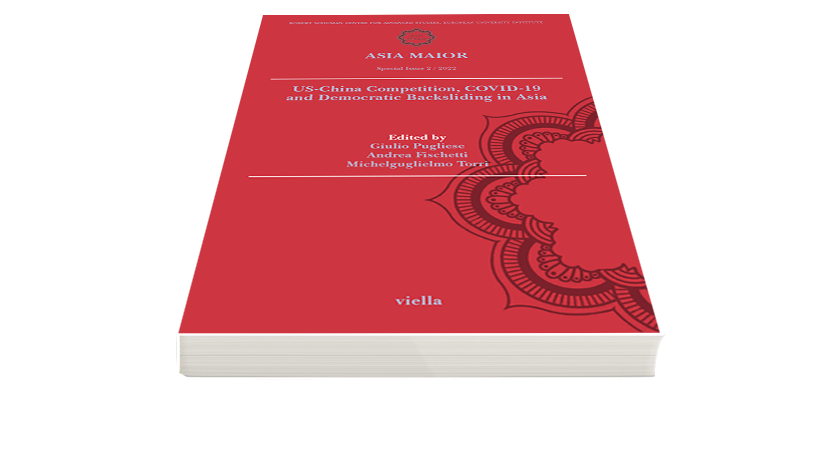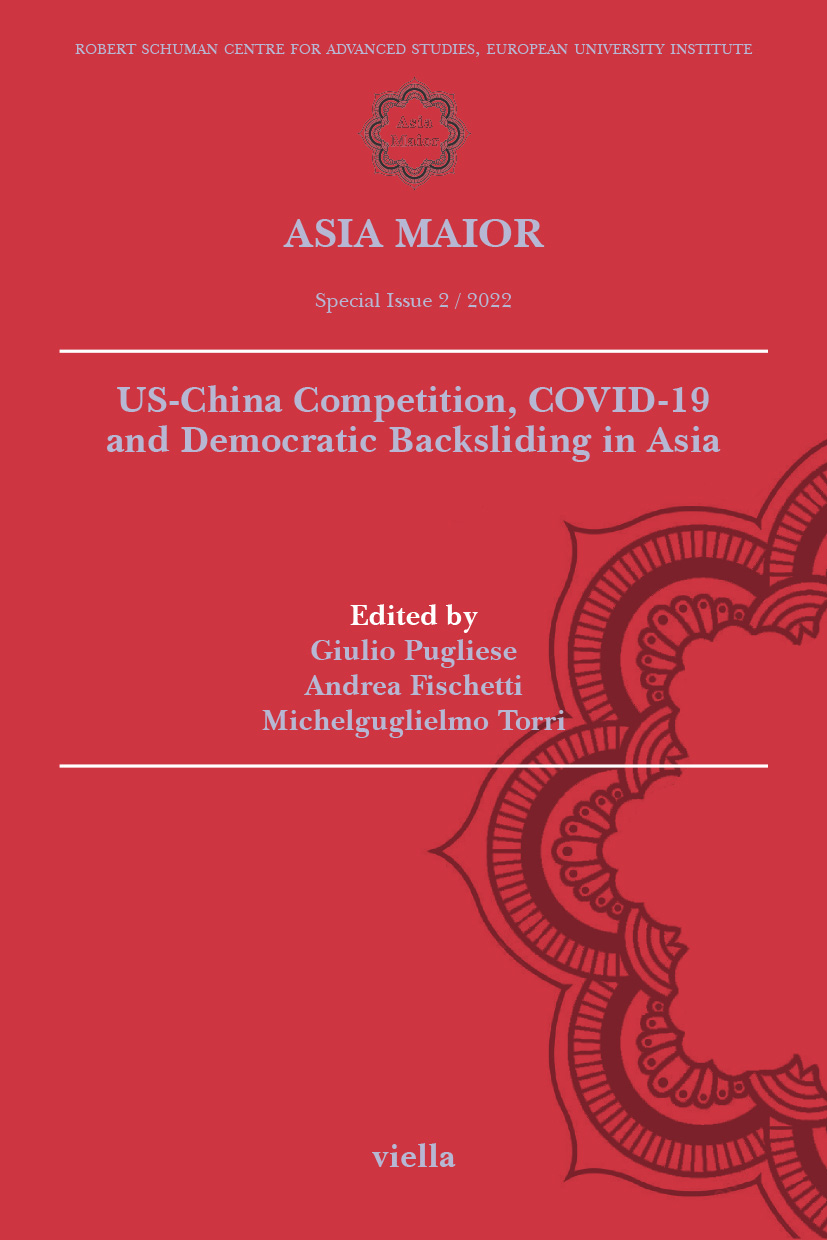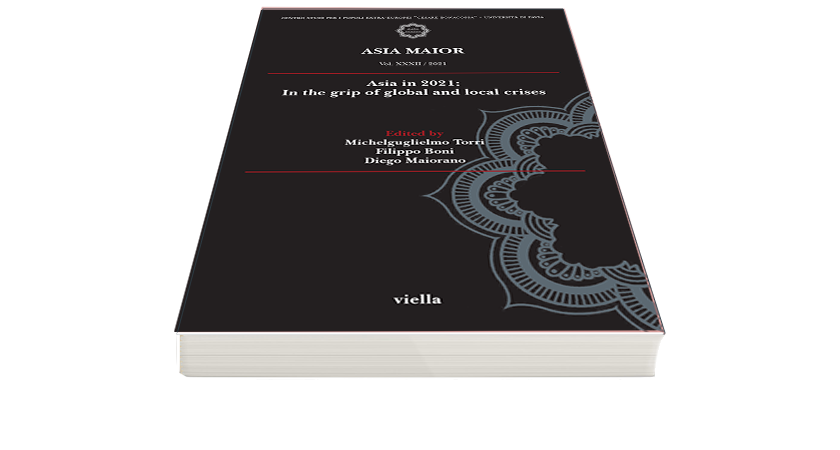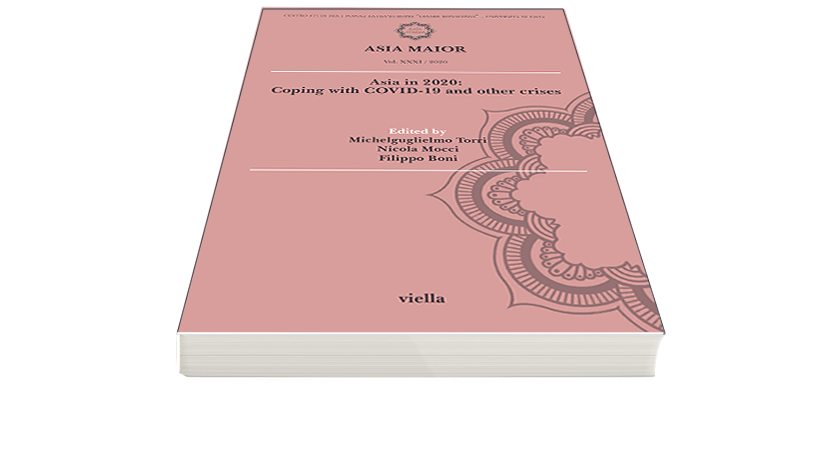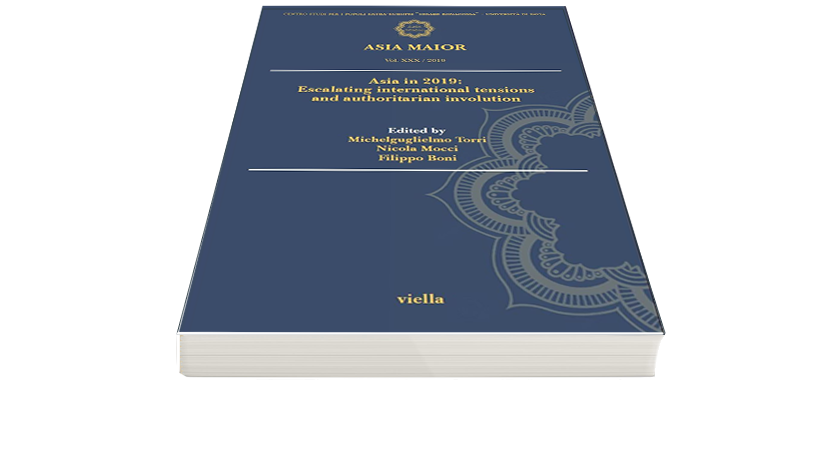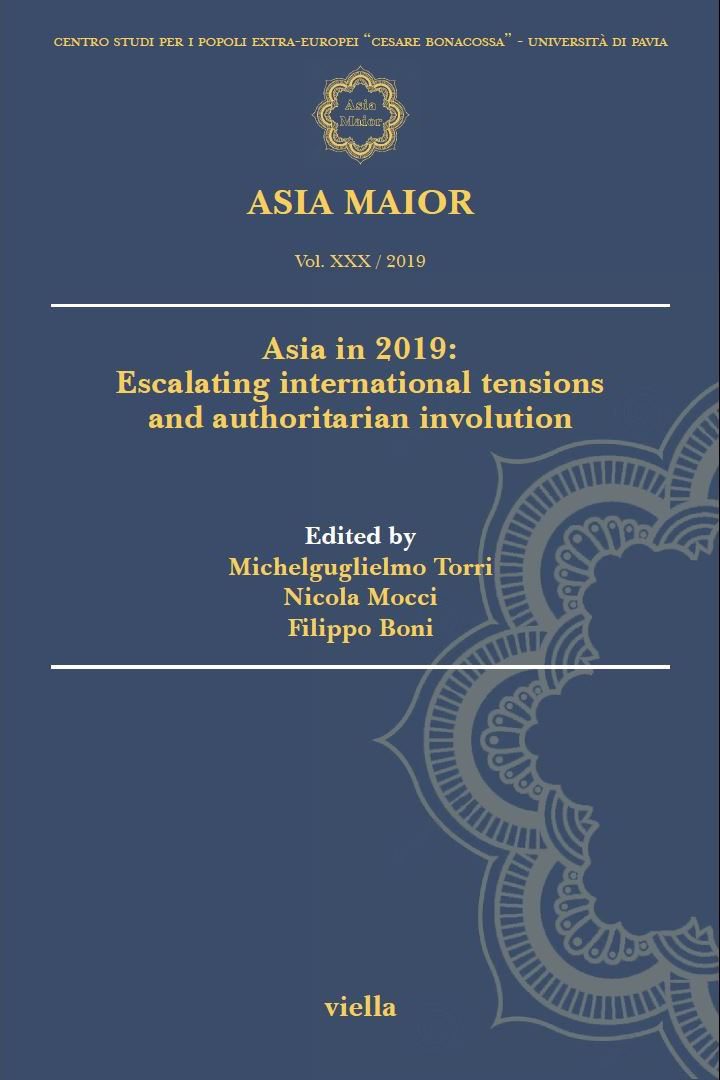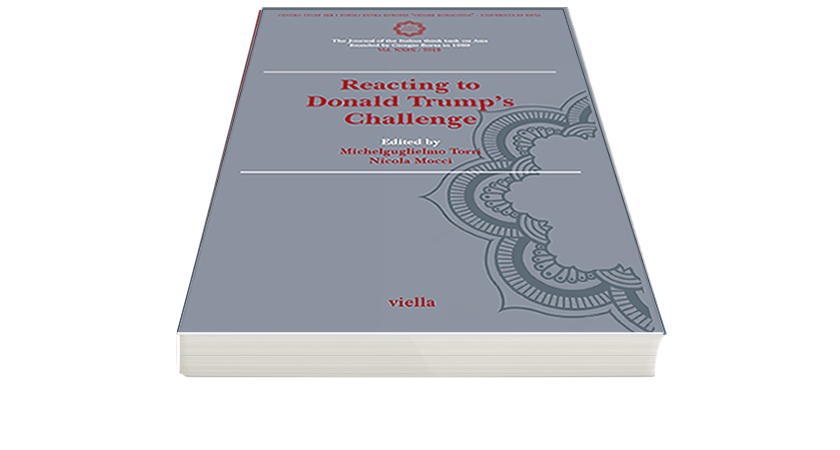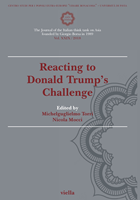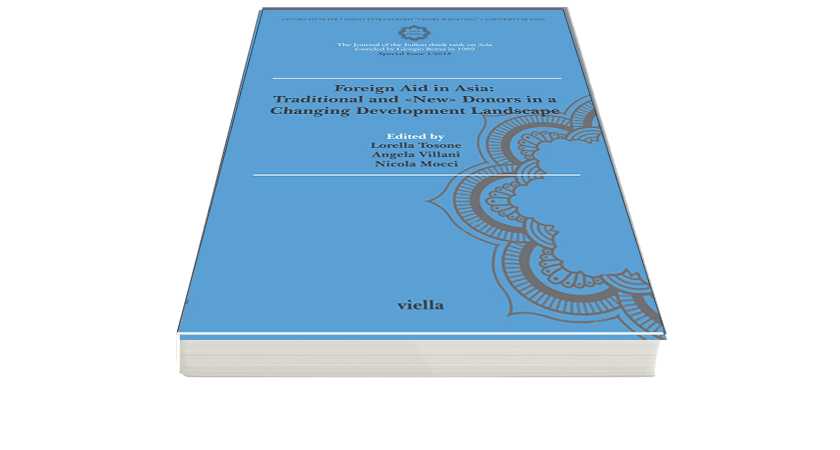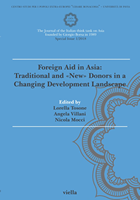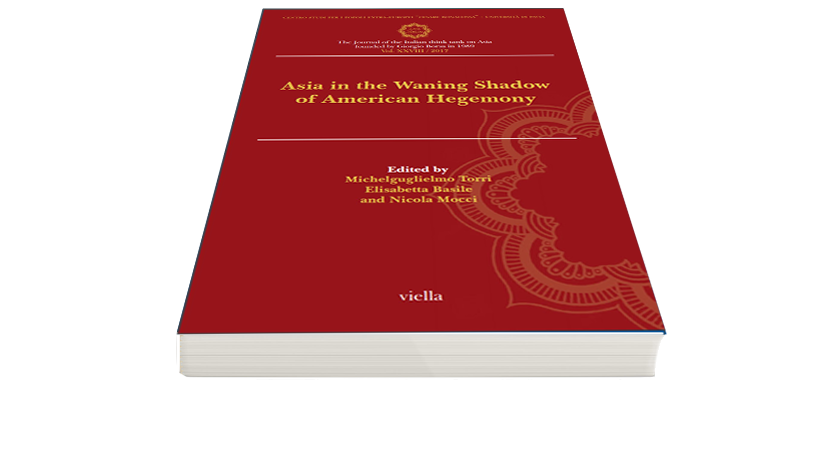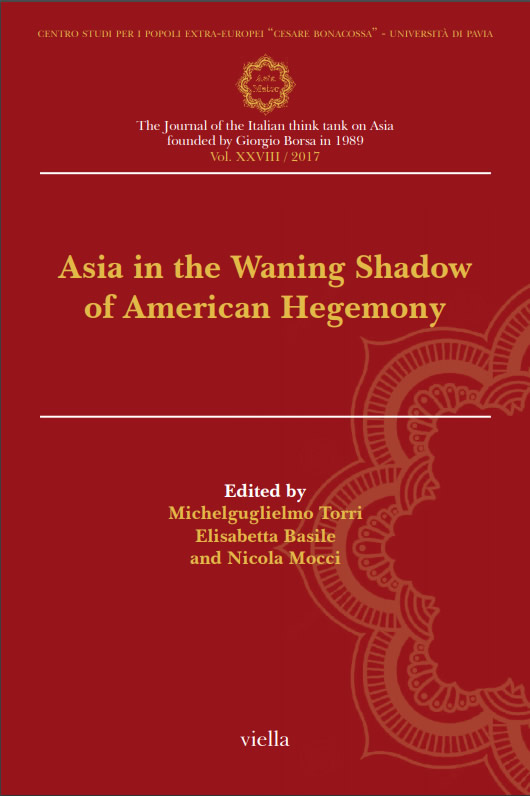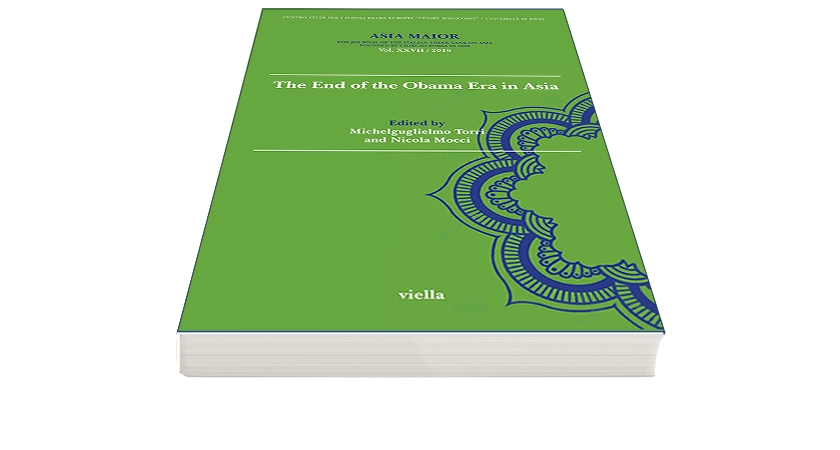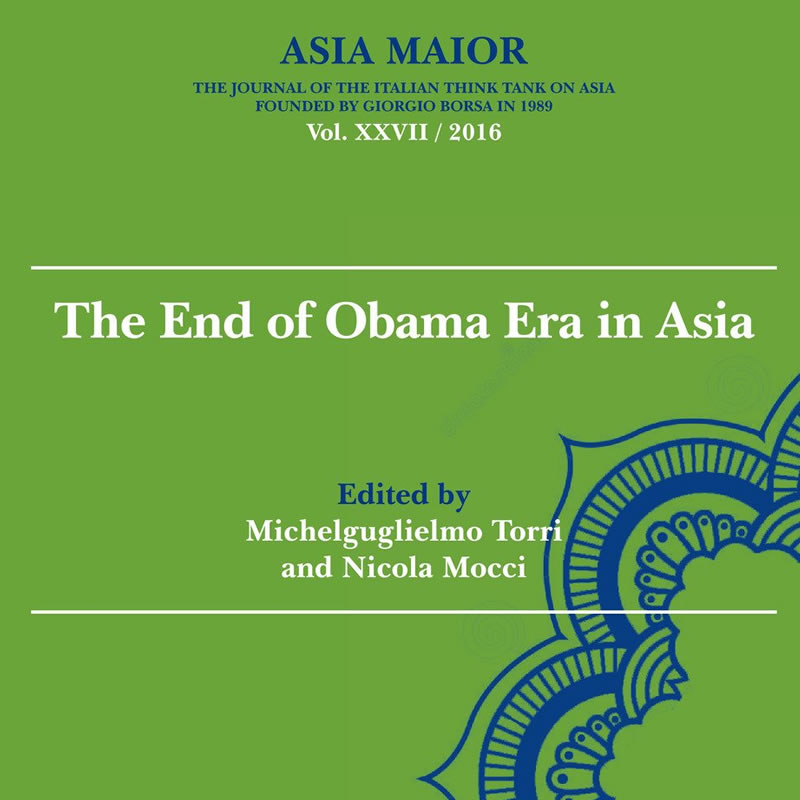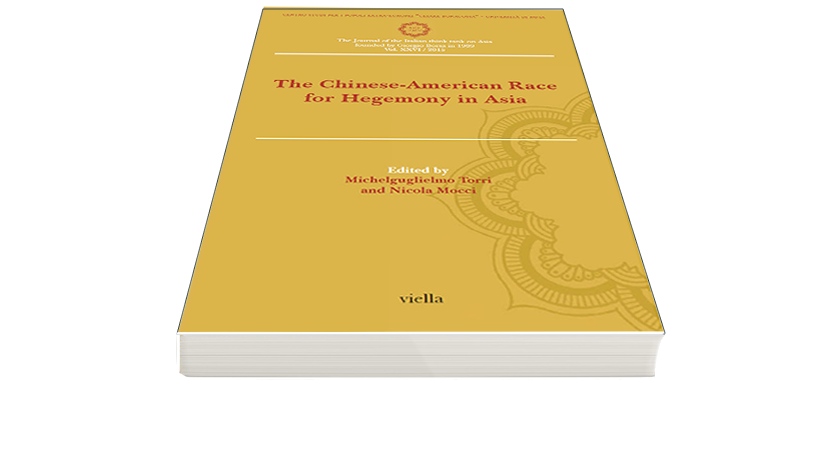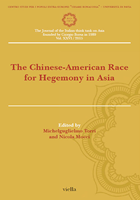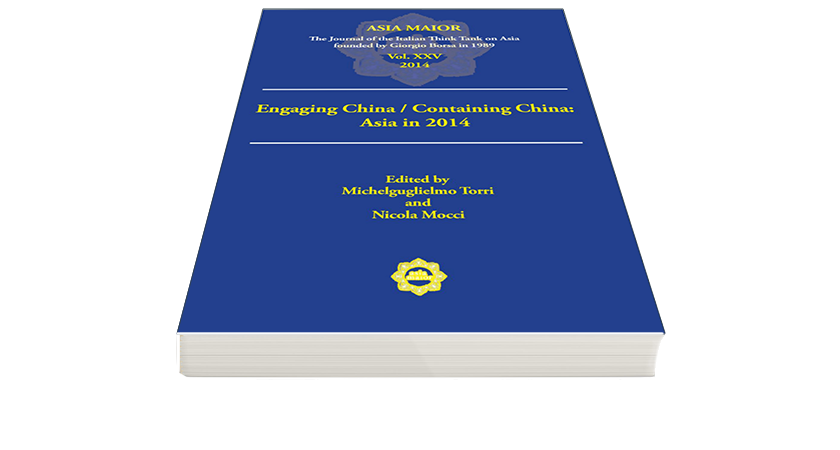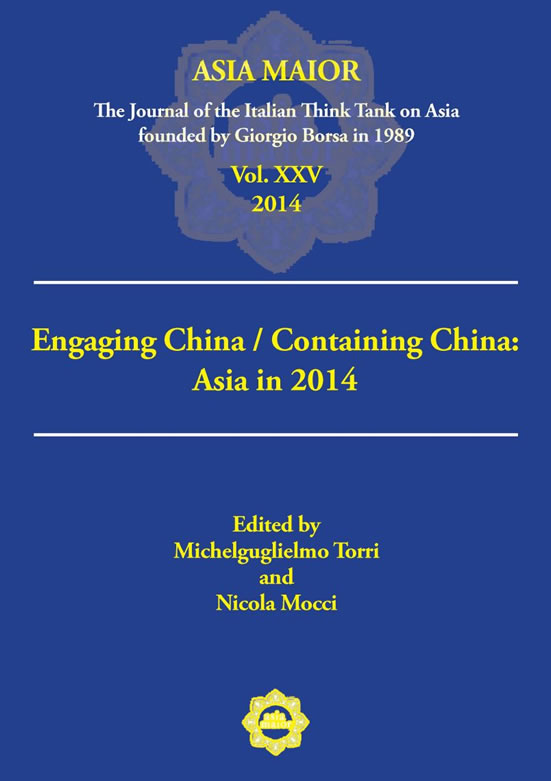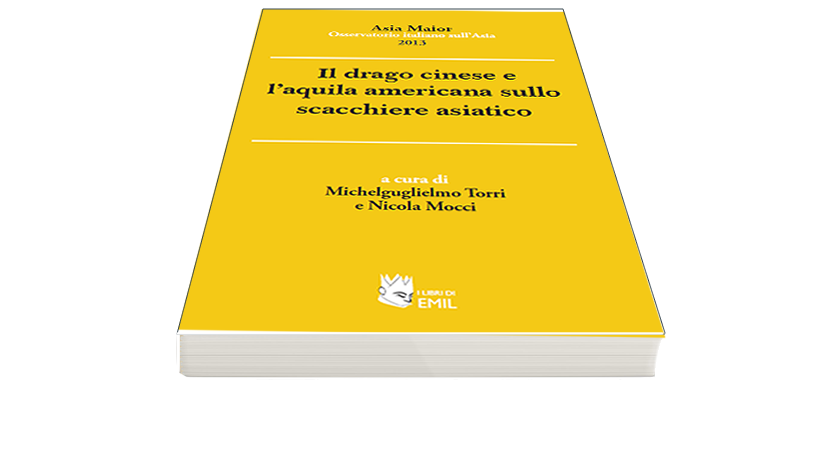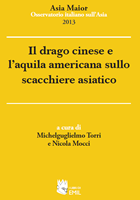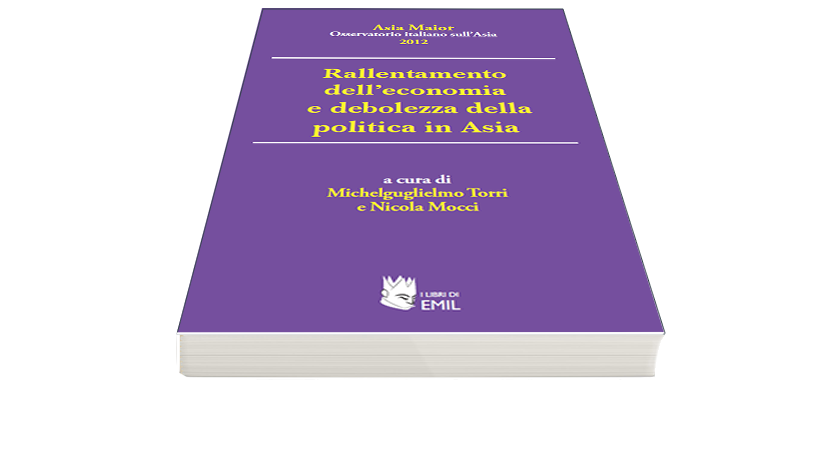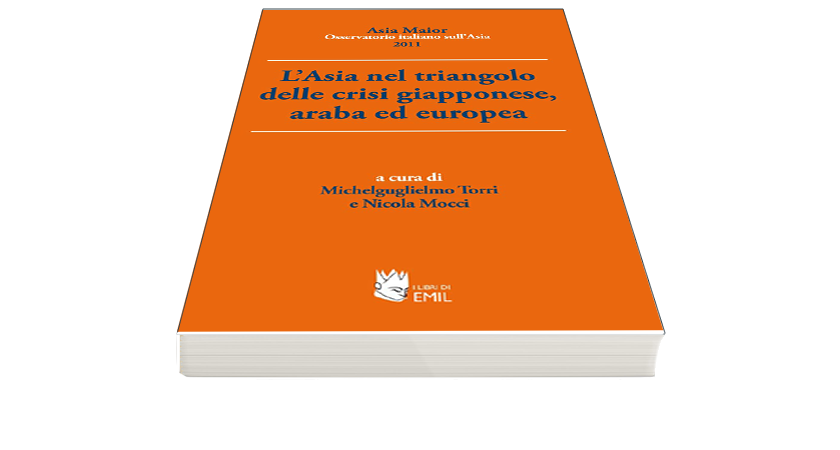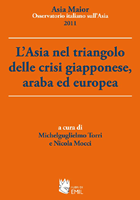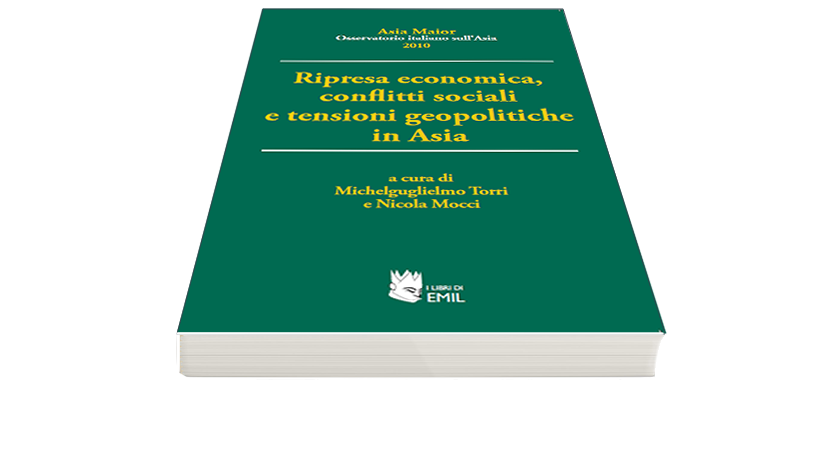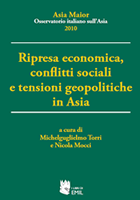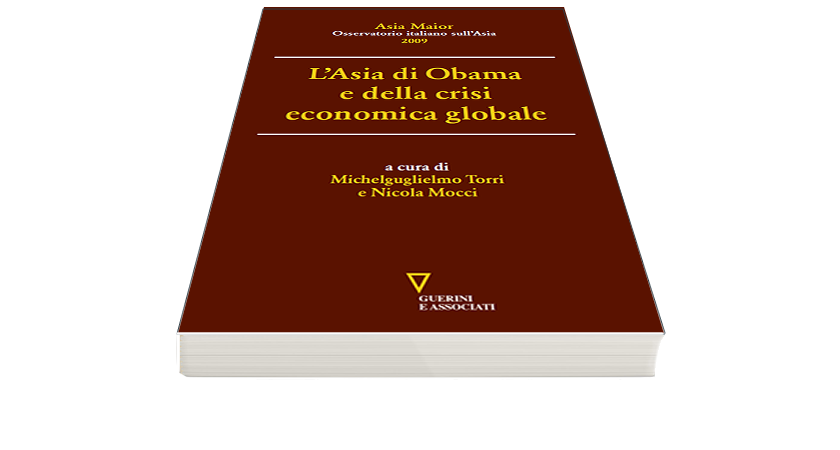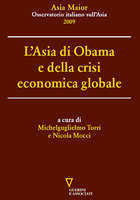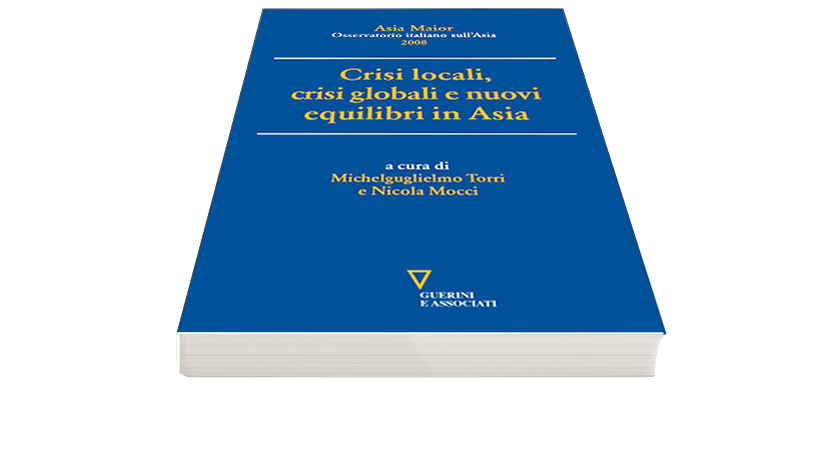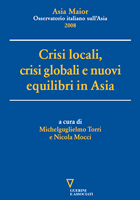India 2024: Challenges and contention in foreign policy
India’s politicians spend almost half of 2024 focused on the general election held over seven weeks in April, May and June. But once the results were announced, energy returned to India’s foreign policy, and the re-elected Modi government moved to deal with a series of pressing issues. This article discusses four of these challenges: stabilising India’s relationship with China; working with Russia; developing the strategic partnership with the United States; and sustaining influence in a dynamic neighbourhood. It argues that over the year New Delhi made some in-roads with each but struggled to make substantive progress with any of them. India struck a deal to disengage forces on part of the contested frontier with China, but broader de-escalation was not achieved. India re-engaged Moscow, but at the cost of adding a further irritant into a relationship with the US under growing scrutiny by the Hindu Right. And India sought to maintain and build influence in South Asia and the Indian Ocean, but suffered significant setbacks, notably in Bangladesh.
keywords – India; Indian foreign policy; China; Russia; United States; South Asia.
1. Introduction
After a frenetic year of diplomacy in 2023, India’s attention returned to domestic issues in 2024. With a general election looming and the first of seven rounds of voting scheduled to start in mid-April, campaigning began early. Growth, jobs, welfare, and identity politics were the main topics of discussion. International relations were barely mentioned, aside from claims by Prime Minister Narendra Modi and his allies that after ten years of Bharatiya Janata Party (BJP) rule, India was more highly respected in the world than ever before [Kaushik 2024, 12 April]. Throughout this period, Modi spent most of his time electioneering, turning only occasionally to foreign affairs. In January, for example, he spent no fewer than 11 days visiting Ram temples around India, before finally arriving in Ayodhya to inaugurate a controversial mandir built on a site of a mosque demolished by Hindu activists in 1992 [Sharma and Rajesh 2024, 23 January]. His only significant foreign engagement that month was a meeting with French President Emmanual Macron, whom he hosted in New Delhi as the Republic Day guest of honour [de Lage 2024, 9 January]. During the following four months, Modi welcomed just one more visitor – the Greek prime minister – and left the country only twice: once in February for a trip to the United Arab Emirates and Qatar and then in March to Bhutan. This pattern of behaviour – intense concern for domestic politics and little involvement in international relations – persisted until the election results were announced on 4 June.
Yet in the background, several complex foreign policy challenges loomed. The biggest was finding an acceptable modus vivendi with China. In 2024, relations with Beijing remained tense and testy, after years of armed confrontation on the Line of Actual Control (LAC) in the wake of the bloody Galwan clash in June 2020 [see Gokhale 2021]. Barely mentioned in election manifestos, this issue nonetheless overshadowed the campaign [Krishnan & Jacob 2024, 24 May]. Three other challenges were less pressing but still tricky to manage. One was calibrating ties with Moscow, without alienating others angered by Russia’s ongoing war in Ukraine [Panda 2024, 22 February]. Another was developing the strategic partnership with the United States (US) in a way that enhanced India’s autonomy and avoided dependence – a challenge complicated by a growing list of irritants, including the allegations that had emerged in 2023 that Indian officials had plotted the targeted killings of Sikh separatists in Canada and the US [see Hall 2024, pp. 301-302]. And the last was no less vexed: the challenge of maintaining influence in India’s near abroad, in South Asia and the island states of the Indian Ocean [Ranjan 2024, 8 May].
India made some progress on all four fronts, but not much. In October, New Delhi and Beijing finally struck a deal to facilitate military disengagement at two key points in Ladakh where Indian and Chinese troops remained in proximity. This agreement promised to restore to Indian forces access to areas effectively closed since the Galwan clash, but it neither restored the wider status quo ante 2020 nor substantively improved India’s strategic position [Joshi 2024, 28 October]. With Russia, New Delhi tried to walk a fine line, re-engaging Moscow after a couple of years in which it had tried to keep some distance from the Russian leadership, while claiming that India still favoured a peaceful settlement to the Ukraine war [see Ganguly 2024]. This approach played well inside India – especially on the Hindu Right – but irritated others outside the country, without delivering obvious rewards. It did nothing to lift India’s stock in the US, for example, where policymakers were unimpressed by Modi’s decision to go to Moscow for his first bilateral summit after the election [Nakashima & Shih 2024, 11 July]. When the Indian prime minister visited Washington in September, the US and India reaffirmed their strategic partnership, but throughout the year it was clear that the Modi government and President Joseph R. Biden’s administration did not see eye-to-eye on many issues, including Russia [Singh 2024, 6 June]. Internal debates within the Hindu Right about the merits of the relationship also spilled into the public domain. In parallel, New Delhi laboured to maintain working relationships with its neighbours. Here too India struggled, especially with Bangladesh, following the ouster of New Delhi’s preferred leader, Sheikh Hasina.
This article analyses each of these challenges in turn. It argues that in 2024 India found it hard to consolidate the gains it made in 2023, during which time it chaired the Group of 20 (G20) and Shanghai Cooperation Organisation (SCO), reenergised its diplomacy with Global South, deepened defence and security cooperation with the United States and the other Quad partners, and successfully frustrated several Chinese initiatives [see Hall 2024]. The election complicated matters. It distracted India’s leaders, as we have seen, but also showed some of them in an unflattering light. The use of divisive and derogatory language to mobilise voters, such as Modi’s description of Muslims as «infiltrators» in a speech in Rajasthan, dismayed some foreign observers [Travelli & Raj 2024, 26 April]. Then there was the result itself, which involved sizable losses for the BJP and only a slim majority for its coalition [Palshikar 2024]. This surprised many analysts and prompted some to speculate about the strength and longevity of the Modi government, despite a post-election push to project an image of stability and policy continuity [Markey 2024, 11 June].
However, the election was not the only factor complicating India’s international relations. Matters well beyond New Delhi’s control continued to cause headaches. The Modi government faced instability and unpredictability caused by wars in Europe and the Middle East, ongoing strategic competition between the US and China, technological change, and multiple political upheavals in states important to India. In short, it had to deal with a «much tougher world» than those confronting its predecessors [Jaishankar 2024, p. 1]. The US Presidential election generated even more disruption, producing one of the closest contests in modern history [Montanaro 2024, 3 December] and preventing Biden from travelling for the Quad summit India was due to host [Haidar 2024, 6 February]. But as we shall see, the Modi government was buoyed by the prospect of a second Donald J. Trump administration, convinced that it would better suit the interests of India and the BJP than another Democrat president in the White House.
2. Stabilisation without normalisation
In 2023, India restored some channels of communication with Beijing that had been cut off or disrupted after the Galwan incident, while sustaining a broad set of trade and travel sanctions and working with other partners to undermine China’s influence in multiple minilateral and multilateral forums [Hall 2024, pp. 308-310]. This approach reflected the ongoing «abnormality» of the Sino-Indian relationship, as India’s External Affairs Minister (EAM) Subrahmanyam Jaishankar described it [2024, p. 3], following the series of armed clashes on the LAC in 2020 and 2021 [see Tarapore 2021, 5 May]. In 2022, the two sides had managed to calm the situation, concluding agreements to disengage their forces at some of the so-called ‘friction points’ in Ladakh, but fell short of restoring the status quo ante. And in September of that year, as Saheb Singh Chadha [2024] notes, China and India arrived at another impasse, with Beijing refusing to permit India to resume patrols in contested areas around Depsang and Demchok, and New Delhi insisting that their resumption was the necessary precondition for talks on de-escalation and the draw-down of forces.
This disagreement persisted into 2024, despite several discussions between Modi and Xi Jinping at multilateral summits and multiple rounds of diplomat- and military-led talks [Chadha 2024]. Things began to change only after India’s election, amid a debate in New Delhi about the need to stabilise and perhaps strengthen the relationship [see Madan 2024, 2 July]. In July, Jaishankar twice met his Chinese counterpart, Wang Yi, once at an SCO summit in Kazakhstan and then at an ASEAN meeting in Laos. New Delhi’s diplomatic language also softened, becoming more upbeat about the possibility of a deal on some points of difference [see, for example, Ministry of External Affairs 2024, 25 July]. Further meetings – including one between National Security Advisors in Russia in mid-September – generated more positive statements [Ministry of External Affairs 2024, 12 September]. Then in October India’s Foreign Secretary, Vikram Misri, announced that New Delhi and Beijing had struck a deal on the complete disengagement of forces in Ladakh, as well as the restoration of patrolling rights [Ministry of External Affairs 2024, 21 October].
This agreement promised to end a dangerous standoff that had lasted for four years and four months and brought China and India closer to war than they had been since 1962. But it fell well short of a normalisation of the relationship. The October deal left large numbers of a troops deployed along the LAC all year round, where earlier lighter forces had been present only in the warmer months [International Crisis Group 2023, 14 November]. A wider agreement to withdraw some or all these troops – which New Delhi terms «de-escalation» – is yet to be made, as Jaishankar and other Indian officials have made clear [Ministry of External Affairs 2024, 4 December]. Moreover, the deal left in place a series of other punitive measures imposed on China by India during and after 2020, including the suspension of direct flights to and from China and the issuing of electronic tourist visas; restrictions on Chinese foreign direct investment and the use of Chinese technology in areas of critical importance; and bans on dozens of Chinese apps, including TikTok [Madan 2022, 4 October].
At best, the deal improved the situation on the ground in eastern Ladakh, reduced the risk of another clash between Indian troops and the People’s Liberation Army, and removed an obstacle to further talks. Yet China and India remain far from the pre-Galwan status quo. In India’s view, at least, the presence of large forces near the LAC is «not in accordance with the 1993 and 1996 Agreements» [Ministry of External Affairs 2024, 4 December] on maintaining peace on the disputed border and sustaining confidence building measures. It is not clear that China – or indeed India – will draw down and redeploy these forces any time soon. Both sides have built new infrastructure in these areas since the Galwan clash and they might be reluctant to relinquish whatever advantage they might offer in a future conflict [Swartz 2023, 17 October; Jun & Hart 2024, 16 May].
More worryingly for New Delhi, it is not obvious that India is now in a stronger position vis-à-vis China now than it was before the Galwan clash. It is possible – but by no means certain – that the robustness of India’s actions in 2020 and 2021 restored conventional deterrence on the LAC [Set & Pant 2023, pp. 148-150]. It is also possible – but again, not certain – that New Delhi’s economic sanctions and soft balancing changed Beijing’s strategic calculus and brought China back to the negotiating table. There is some evidence to suggest that Beijing is more concerned about India as an emerging challenge than it was before, but whether that view will translate into a softer or harder policy towards India is not clear [Deb & Jiayue 2024]. But the bigger problem is that New Delhi has not made substantive progress in closing the economic and the military gaps with its northern neighbour since 2020. In 2024, India’s economy was still only about 20% and its defence budget perhaps 30% the size of China’s – about the same as they were five years earlier [Inamdar 2024; Hooda 2024, 2 July]. The Modi government continues to struggle to implement the reforms needed to stimulate higher rates of growth [Subramanian & Felman 2022] and to direct funds to necessary military modernisation [Mukherjee 2022].
Of course, India can and does also make use of partners to manage the threat, and in recent years New Delhi has forged stronger ties with the US and others for that reason [see Tarapore 2023]. But in 2024 the Modi government tested those relationships, most notably with a determined effort to re-engage Moscow.
3. Perceptions and misperceptions
India’s close ties with Russia date back to an earlier effort to balance Chinese assertiveness. In the 1960s, the Sino-Indian border war, the Sino-Soviet split, and signs of a possible rapprochement between Washington and Beijing drove New Delhi to look to Moscow for arms and economic support [Singh 1984]. In 1971, they formalised this tacit partnership with a Treaty of Peace, Friendship and Cooperation that provided India with access to the latter’s markets, capital, universities, defence technology, and diplomatic support [see Subrahmanyam 2021]. This arrangement annoyed the West but worked – at least in part – for India. Soviet assistance helped to alleviate some of the pressure on India exerted by China during the latter part of the Cold War, allowing New Delhi to modernise the military, if not the economy [see Clark 1977].
The logic of this strategic partnership dissipated, however, with the normalisation of Sino-Russian and Sino-Indian relations at the end of the Cold War and with the collapse of the Soviet Union in 1991. In the 1990s, neither Moscow nor New Delhi needed the other to balance China, and for India a weakened post-Soviet Russia looking to build better ties with the West was anyway far less useful. But the Cold War strategic partnership left three enduring legacies. One is India’s long-term dependence on the Russian defence industry for maintenance, spares, repairs, training, know-how, and in some cases ammunition, as well as armoured vehicles, aircraft, and ships. As a result, more than fifty years after the Indo-Soviet Treaty was signed, about 85% of India’s large weapon systems are today Soviet or Russian in origin [Lalwani & Sagerstrom 2021, pp. 152-154]. Another legacy is the perception – widely held in New Delhi – that Russia is a reliable friend that respects India and India’s concerns. Jaishankar’s assessment, made in June 2024, that the Soviet Union / Russia has «never done anything to impact our interests negatively» [NDTV 2024], is shared by many in India’s strategic elite. And the last is the conviction or perhaps misperception – also widely held – that Russia is and will remain a «great power», a pole in an emerging multipolar order, which deserves the respect of others, despite past and present economic, social, and political problems [see Sikri 2024, pp. 183-202].
These legacies have shaped India’s approach to Russia since the end of the Cold War and especially since the revival of Russian fortunes in the 2000s under Vladimir Putin. They have made New Delhi reluctant to loosen ties with Moscow, despite the development of new and (for India) arguably more advantageous strategic partnerships with others and Putin’s increasingly erratic behaviour. They help to explain why the Modi government has maintained a dialogue with Moscow after Russia’s invasion of Ukraine in February 2022 and refused to condemn Putin’s aggression. But they do not provide a complete explanation. In recent years, two more factors have also played in part in New Delhi’s calculations. The first is India’s growing thirst for cheap hydrocarbons, needed to fuel the economy, control inflation, and to aid post-COVID recovery. The other is a new but acute anxiety in New Delhi that Moscow is being both lured and forced into a Sino-Russian alliance detrimental to India’s interests [Ganguly 2024, pp. 63-64; pp. 57-58].
For all these reasons, India has walked a fine line on the Ukraine war. From early in the conflict, it has taken advantage of Russia’s inability to sell oil by buying up large quantities, some to use locally and some to refine and sell on to others [Vickery Jr. & Cutler 2024, 3 September]. At the same time, the Modi government has repeatedly urged all concerned to settle their differences at the negotiating table, lamenting the impact of the conflict on the global economy [Ministry of External Affairs 2022, 22 September]. Not long after the war began, the prime minister opined in Putin’s presence that «today’s era is not the era for war» – though he went no further than this mild rebuke [Lau and Saeed 2022, 16 September]. Indeed, New Delhi has gone to considerable lengths to avoid actions that might signal either support or criticism for Russia. In 2022 and 2023, Indian officials sustained dialogue with their Russian counterparts in both bilateral meetings and multilateral gatherings, at the BRICS and the SCO, and Jaishankar met the Russian foreign minister on multiple occasions. But limits were also placed on India’s engagement with Moscow. New Delhi was reluctant, for instance, to facilitate a bilateral summit between Modi and Putin, despite a longstanding commitment to hold annual leaders’ meetings, a long hiatus since the Indian prime minister’s last visit to Russia in 2019, and several personal invitations from the Russian president [see, for example, President of Russia 2022, 16 September].
However, India’s approach began to change towards the end of 2023. In late December, Jaishankar went to Russia and stayed for an unusually long five days. He called on Putin, as well as the Deputy Prime Minister Dennis Manturov and Foreign Minister Sergei Lavrov. The trip raised questions about the Modi government’s intentions, and when they were asked, New Delhi’s answers were surprisingly defensive. Shrugging off suggestions the West might be unhappy about the visit, Jaishankar declared that a «country which has maximum friends and minimum adversaries is obviously one with smart diplomacy. Why would a country restrict its friends?» [quoted in Bhaumik 2024, 3 January]. He followed up on these remarks at the Raisina Dialogue in February 2024, observing that «a lot of doors have been shut to Russia», that Russia was turning to Asia as a result, and that «it makes sense to give Russia multiple options» [Hindustan Times 2024, 23 February]. These comments – combined with National Security Ajit Doval’s bilateral with his Russian counterpart at a BRICS meeting in Moscow in April – suggested that India was becoming more openly supportive of Russia [Hindustan Times 2024, 25 April].
At the time, exactly why India might make sure a move was contested. Some argued that following several turbulent months in US-India relations, New Delhi wanted to show Washington that it had other partners on which it could rely [Bhaumik 2024, 3 January]. Others thought that after a couple of years of relative diplomatic neglect, the Modi government was merely trying to reassure Moscow that New Delhi respected Russian concerns and interests and to ensure outstanding defence orders were met. They noted Russian unease about India’s deepening ties with the US and about the terms of trade with India, especially in oil [Zakharov 2024, 23 January]. They also pointed to New Delhi’s anxiety about ongoing delays to much needed arms supplies, including air defence systems and frigates [Panda 2024, 22 February].
Modi’s trip to Moscow on 8-9 July, immediately after the election, intensified and broadened this debate. Critics in the West complained not just about the symbolism and the timing of the visit – it was the first bilateral summit for the re-elected prime minister, and it took place on the eve of NATO’s 75th anniversary summit – but also to its optics, which seemed designed to maximise its propaganda value to Russia [Ethirajan 2024, 9 July]. A smiling Modi was greeted by Russian president with a hug; the two were filmed driving in a golf cart and taking tea in the garden of one of Putin’s dachas; and the Indian prime minister was awarded the Order of St Andrew the Apostle in an elaborate ceremony [Hall 2024, 10 July]. To Kyiv, this suggested that India’s neutrality regarding the Ukraine war was a sham [Giordano 2024, 9 July]. To others, it was taken as a sign that the Modi government might be losing its way in foreign policy [Rehman 2024, 30 July].
These impressions were reinforced by three things. The biggest was that Modi’s embrace of Putin did nothing to slow progress in the Sino-Russian «no limits» strategic partnership. In May, Putin and his Chinese counterpart Xi Jinping agreed to expand bilateral military exercises, conduct maritime patrols, and cooperation on space technologies [Zhen 2024, 17 May]. In July, the Russian leader met Xi again and lauded their partnership [Al Jazeera 2024, 3 July]. The second was that the Modi-Putin summit produced little in the way of fresh agreements or solid commitments to honour existing deals, including overdue arms transfers. These meagre outcomes contrasted with recent gains made not just by China but also by North Korea, which appears to be much more adept at exploiting Russia’s relative weakness and securing advanced defence technologies from Moscow [Kim 2024, 21 November]. The last was that the summit inadvertently highlighted Russia’s disregard for some Indian interests, notably the safety of its citizens overseas. In February, New Delhi acknowledged that almost 100 Indians had been duped into joining the Russian army. Some had been sent to Ukraine; some had died in combat. At that point, the Ministry of External Affairs (MEA) confirmed that it had «strongly» conveyed its unhappiness to Moscow and expected the Russian authorities to return the men soon [Bhaumik 2024, 27 February]. But by the time Modi went to Moscow six months later, several Indians were yet to be released. And although he secured a personal promise from Putin to facilitate their swift return, as late as mid-December, 19 men were still in Russian military service [Hindustan Times 2024, 13 December].
In August, Modi made a surprise visit to Kyiv to meet Volodymyr Zelensky, and – some analysts argued – to respond to India’s critics in the West [Markey & Ruppert 2024, 29 August]. And at the close of 2024, his government was still insisting that India would not take a side in the Ukraine conflict [The Times of India 2024, 7 December]. Yet its behaviour suggested otherwise. In mid-December, for example, within days of a reaffirmation that New Delhi supported a negotiated end to the war, Defence Minister Rajnath Singh went to Moscow to take delivery of a new ship and to urge Russia to speed up the transfer of air defence systems. But Singh he also delivered a message, telling Putin that despite «enormous pressure» from others, Indo-Russian «friendship» remains «higher than the highest mountain and deeper than the deepest ocean» [Sharma 2024, 11 December]. These comments – reinforced by an anonymous briefing pointing to the «immense potential» of the bilateral partnership – were taken by commentators as evidence that India was determined to «stand by» Russia [Pandit 2024, 11 December].
What drove the Modi government to do this, despite the meagre gains and the substantial risks involved, in terms of the strain the re-engagement of Russia placed on other partnerships? India’s need for arms and mounting concern about Moscow’s ability to deliver them, were clear drivers [Pandit 2024, 11 December]. So was the nagging worry that a cornered Russia might throw in its lot with China, forming an alliance that would dominate Eurasia and restrict India’s strategic autonomy in that region and beyond [see Tellis 2022, 25 April]. And New Delhi’s unshakeable – but far from incontrovertible – beliefs that Russia respects India’s interests and deserves respect as a ‘great power’ in an emerging multipolar order, likely played their parts too [see Chivvis & Geaghan-Breiner 2023, 9 November]. But it appears that the revival of the Modi government’s enthusiasm for Russia was also related to tensions in the US-India relations – and to a desire to demonstrate New Delhi’s unhappiness with the West and its independence of mind. Certainly, what one analyst termed «Modimania in Moscow» [Turayanova 2024, 15 July] was celebrated as such not just in Russia, but also by the Hindu Right in India [Talukdar 2024, 14 July].
4. Non-West and Anti-West
In 2023, Washington and New Delhi took significant strides forward in developing their strategic partnership, reaffirming their commitment to Initiative on Critical and Emerging Technologies and approving the manufacture of General Electric-designed jet engines in India [Hall 2024, p. 303]. Modi’s State Visit in June was widely acclaimed as a success, despite differences of opinion on the Ukraine war and human rights [Lalwani et al. 2023, 20 June]. Yet from September onwards the allegation that New Delhi was running a targeted killing programme, first levelled by Canadian Prime Minister Justin Trudeau, cast a shadow over the relationship. This shadow darkened when in November US authorities unsealed an indictment against an Indian citizen accused of plotting to murder the New York-based head of the «Sikhs for Justice» group, Gurpantwant Singh Pannun [Hall 2024, p. 302]. Both accusations were denied by New Delhi, but this did not stop Indian commentators from suggesting that such covert action might be justified and from complaining that some Western governments, including the US, were not doing enough to manage threats to India’s national security by elements of its diaspora [see, for example, Kapur 2023, 28 September].
This issue festered in 2024, with neither New Delhi nor Washington seemingly able to find a mutually acceptable way to manage it. At the same time, Canada also struggled to establish a working relationship with India to identify who was responsible for the killing of Hardeep Singh Nijjar and for the alleged intimidation of other Sikh separatists [Miller and Shih 2024, 14 October]. In October 2024, media speculation then forced Trudeau to go public with Ottawa’s belief that Indian diplomats had been involved in both activities [Falconer 2024, 15 October]. It was also leaked that Canadian authorities suspected India’s Home Minister, Amit Shah, had directed the operation [Reuters 2024, 30 October]. Amid the furore that followed, Canada expelled six Indian diplomats, including the Head of Mission, and India retaliated in kind [Sebastian 2024, 15 October].
In parallel, other irritants emerged in the US-India relationship. Together, these fed narratives popular on the Hindu Right that the Biden administration was not giving India the respect it was due. Some even suggested that Washington’s «Deep State» was determined to undermine Modi and the BJP. The US President’s inability to travel to New Delhi for Republic Day or for a Quad summit; the Pannun attempted murder case; unflattering reports about the state of democracy, human rights, and religious freedom in India; supposed US involvement in a change of government in Bangladesh; and finally the indictment of the Gujarati billionaire – and Modi ally – Gautam Adani for alleged fraud were all seized upon as evidence of American perfidy [see, for example, Talukdar 2024, 23 December]. In early December, anger about this issue spilled over with a series of social media posts from the BJP official account accusing the State Department of being «behind» a campaign to «target the BJP and India» [Roy 2024, 8 December].
This outburst provided insight into internal debates within the Hindu Right – into arguments rarely aired in public – about the merits of the Modi government’s decade-long effort to deepen the strategic partnership with the US. That effort, it must be remembered, was not predetermined, and remains contentious. Large parts of the Hindu Right – including the Rashtriya Swayamsevak Sangh (‘National Volunteer Association’ or RSS) to which Modi devoted much of his life before entering politics – are deeply anti-Western. Indeed, since the 1920s the RSS has committed itself to purging all remaining elements of Western thought and practice from India, in favour of what they consider authentically Indian alternatives [see Sharma 2011]. When Modi took power in 2014, it was not clear how much of this ideological agenda he intended to pursue, in domestic or foreign policy, nor how affected he had been by US and European criticism of his conduct as Chief Minister in Gujarat, before, during and after the communal violence in that state in 2002 [see Marino 2014, pp. 103-146; Hall 2019, pp. 1-10].
Once in office – and to the surprise of many observers – Modi pushed hard for closer ties with the West and especially the US [see especially Pant 2014]. Yet significantly, Modi’s strongest ally in this enterprise – Jaishankar, initially as ambassador to Washington and then as Foreign Secretary – was a bureaucrat, not a BJP politician nor an RSS activist. It was Jaishankar who facilitated a strong working relationship with President Barack H. Obama’s administration and with Congress, and who provided a rationale for the strategic partnership – first internally, and then, after retirement from the MEA, publicly [see Jaishankar 2020]. It was Jaishankar who crafted a narrative that reassured Western partners that, whatever qualms they might have about working with a Hindu nationalist government, Modi’s Naya Bharat («New India») was determined to be a «rule-abiding and responsible player» in the world [Jaishankar 2020, p. 55]. In 2019, Jaishankar’s success in these endeavours convinced the prime minister to make him foreign minister [Iyengar 2024, 5 April]. This allowed the government to push ahead with deepening the strategic partnership with the US and with the Quad [Mukherjee 2023]. But Jaishankar’s appointment and his agenda did not settle the debate within the BJP – let alone within in the RSS – about the kind of relationship India ought to have with the West [see Sengupta 2022, 10 October]. They did not win over anti-Western elements of the Hindu Right sceptical about New Delhi’s closer ties with Washington.
A sense of this internal disagreement – and of the implications for the Modi government and the US-India strategic partnership – can be found in Jaishankar’s second book, Why Bharat Matters [Jaishankar 2024], published just before the election. Despite the title, the book is aimed at a domestic audience than an international one. It really seeks to explain why foreign policy matters to Bharatis (Indians), rather than why Bharat (India) matters to the world. For that purpose, it includes a lengthy discussion of how Indians ought to think about the West and why India ought to work with it – not against it, as some on the Hindu Right would prefer. Jaishankar concedes that the West’s misguided universalism and enduring hypocrisy continues to grate on the Rest. But he observes that its relative power is waning, amid an «emerging multipolarity», and its ability to influence what happens outside the West is declining [Jaishankar 2024, p. 44]. Moreover, he argues – pointing to China’s experience – that partnership with the West is the sure pathway to rapid development. There is, Jaishankar argues, «little profit in being anti-West» and a strong pragmatic argument for cooperation [Jaishankar 2024, p. 98]. India must recognise that the optimal strategy combines «[d]eveloping affinities» with the West while remaining confidently «non-West» [Jaishankar 2024, p. 98].
The fact that Jaishankar found it necessary to make this argument speaks to the doubts that persist within the Hindu Right about the Modi government’s tilt to the West. And the upsurge of criticism of the US and the Biden administration towards the end of 2024 – including some coming directly from the BJP, as we have seen – suggests, however, that it had limited impact on the sceptics. But by that point in the year, the outcome of the US Presidential election had already changed the rules of the game. In Trump, both the Modi government and the Hindu Right perceives an ideological ally [Madhav 2020, 24 February]. They have enthusiastically adopted his rhetoric, as the BJP’s attack on the «Deep State» shows. They are convinced that the earlier Trump administration did more for US-India ties than others, despite evidence to the contrary [see, for example, Singh 2024, 19 September]. They believe that the incoming administration will be tough on China and on Islamist terrorism, reject economic and cultural «globalism», mute criticism of India’s democratic backsliding and handling of human rights, and deliver new economic opportunities [Hebbar 2024, 8 December]. They think that Trump will cut some deal with Putin to bring the Ukraine war to an end – and perhaps also bring Russia back in from the cold [Das 2024, 1 December]. And some also believe that a fundamentally transactional and India-friendly Trump will make some of New Delhi’s other recent troubles – including the pending court cases concerning targeting killings – go away [The Economic Times 2024, 5 November].
These hopes for a «Trump bump» might be fulfilled, or might not [see Madan 2024, 5 December]. Either way, the past year highlighted irritants in the US-India relationship that could prove difficult to remove regardless of who sits in the White House. One is the growing tendency in New Delhi – apparent in the Modi government’s response to the result of the Presidential election – to see US-India ties through an ideological lens, downplaying the bipartisan commitment to the partnership on the American side, and casting the Democrats as somehow inimical to India’s interests. The other is the resurgence of a wider mistrust of the US and American intentions more broadly. In 2024, this became obvious in an unexpected way, in the aftermath of the fall of the Bangladeshi leader, Sheikh Hasina.
5. Sisyphean labours
In early January, in an election marred by protests, violence, a low turnout, and a boycott by the main opposition party, Sheikh Hasina and her Awami League was returned to power for a fourth term [Riaz 2024, 11 January]. India – which had backed Hasina since 2008 – was happy, but international observers were not. Nor, as it turns out, were many Bangladeshis, who were soon back on the streets, only to be met by armed Hasina supporters and elements of the security forces. Finally, after weeks of violence in which hundreds were killed, Hasina resigned and fled on a military aircraft to India, where she found refuge in a New Delhi bungalow [Riaz 2024, 6 August].
The arc of Hasina’s triumph and fall was mirrored by India’s broader experience in its immediate region during the year. It had successes but they were offset by failures. To be sure, there was little or no change in some regional relationships. There were no substantive conversations between India and Pakistan [Faisal & Rehman 2024, 15 October]. Tentative approaches were made to the Taliban in Afghanistan [Krishnan 2024, 14 November] and to Myanmar’s ailing military junta [Laskar 2024, 8 November] but neither made progress. But in some of the relationships where New Delhi was more active, India’s fortunes fluctuated.
With Nepal, for example, the Modi government had succeeded in 2023 in stabilising the relationship with the historically India-sceptic prime minister, Pushpa Kamal Dahal (known as Prachanda), striking some important deals to import electricity from the land-locked state [Ranjan 2023, 5 June]. In March 2024 Prachanda’s coalition collapsed, however, and he was replaced by the traditionally India-friendly K. P. Sharma Oli – a development initially welcomed in New Delhi [Mazumdar 2024, 13 July]. But then Oli went to Beijing for his first visit in office, where he signed a significant agreement for deeper economic cooperation with China under the Belt and Road Initiative [The Kathmandu Post 2024, 4 December]. By the end of the year, it appeared that Nepal was determined to pivot away from India, not towards it [Woo 2024, 3 December].
With Maldives, India also experienced ups and downs but ended the year in a better position. President Mohamed Muizzu was elected in November 2023 on an anti-India platform. In 2024, he succeeded in expelling India’s small military presence on the islands but then shifted back towards a more friendly posture. In June Muizzu attended Modi’s swearing-in ceremony and returned to India for another visit in October, this time seeking a debt bailout that New Delhi was willing to facilitate. By the end of the year, the bilateral relationship had stabilised, albeit with lingering ill-feeling caused by a social media spat over criticisms made of Modi by Maldivian ministers and a short-lived tit-for-tat boycott of Maldives resorts by Indian tourists [Yadav 2024, 26 November].
Only with Sri Lanka did India’s position get markedly stronger during 2024. Bilateral ties had been improving since the fall of the China-leaning Gotabaya Rajapaksa government in July 2022 and India’s generous economic assistance the wake of that crisis. New Delhi continued to make gains in 2023 and the early months of 2024, securing commitments from Colombo to block Chinese research ships from operating in Sri Lanka’s Exclusive Economic Zone and starting talks about the possibility of Indian firms running Sri Lanka’s airports [Gamage 2024, 1 March]. Then came the election of the erstwhile Marxist Anura Kumara Dissanayake as the new President of Sri Lanka in September and the landslide victory of his National People’s Party in the parliamentary poll in November. Some Indian analysts responded to these developments with concern, pointing to Dissanayake’s past criticisms of India [see, for example, Sharma 2024, 26 September]. But the early signs suggested the new Sri Lankan leader was committed to a measured relationship with New Delhi and that India was keen to maintain mutual goodwill. Indeed, in mid-December Dissanayake made a State Visit and was warmly received by Modi, and the two promised to deepen the bilateral partnership [Kugelman 2024, 18 December].
The contest between this situation and the one that developed in India’s relationship with Bangladesh after the change of government in Dhaka is stark. Hasina’s fall prompted an extraordinary outburst of anger in India and a seemingly uncontrolled deterioration in bilateral ties. Jaishankar’s statement to parliament immediately after the change of government placed the blame for the upheaval squarely on the protesters, whom he alleged had attacked the police and the properties of people associated with the government, as well as «minorities» [Ministry of External Affairs 2024, 6 August]. India’s media went further. The opposition was denounced as militant Islamists; the Bangladeshi army was accused of orchestrating a coup; and news of attacks on Hindus, Hindu property, and Hindu temples dominated the coverage [Mahmud & Sarker 2024, 8 August; Ethirajan 2024, 4 December]. Amid this cacophony, some also accused Washington of instigating «regime change» in Bangladesh and suggested that the US was working with Islamists, China and Pakistan to humiliate India, seize an offshore island for an airbase, and carve a Christian state out of Bangladesh, Myanmar, and India’s Northeast [Aneja 2024, 12 August; see also Bajpai 2024, 8 August].
New Delhi did eventually engage the new interim government, sending Foreign Secretary Misri to Dhaka in early December [Ministry of External Affairs 2024, 9 December]. But by that point, it seems reasonable to say that damage had been done, to bilateral ties with both Bangladesh and the US. In Dhaka, the head of the interim government, Mohammed Yunus, complained of a coordinated campaign of «propaganda» coming from India designed to undermine the new regime [The Times of India 2024, 4 December]. Meanwhile, Washington was forced to publicly reject claims that the US had played in role in the change of government [Singh and Pitas 2024, 13 August]. Equally pointedly, the US urged New Delhi and Dhaka to resolve their differences peacefully [Hindustan Times 2024, 11 December].
6. Conclusion
India’s foreign policy changed during 2024 as the Modi government addressed various external challenges in the aftermath of the election. As we have seen, New Delhi moved to stabilise the relationship with China, re-engage Russia, recalibrate the strategic partnership with the US, and react to developments in the neighbourhood – with mixed success. Of course, it did other things too. In the second half of the year, Modi travelled unusually widely, going to Europe three times, Russia and Southeast Asia twice each, and to Africa, South America, and the Middle East. In parallel, India sustained its outreach to the Global South, begun while G20 chair in 2023, holding a third virtual summit in August 2024 [Ministry of External Affairs 2024, 14 August]. These and other initiatives, like the CARICOM meeting in Guyana that Modi attended in November, were presented as efforts to make India what Jaishankar called a vishwa bandhu – a close friend or brother to the world [Indian Express 2024, 6 May].
It remains to be seen if others accept this benign view of India and India’s role in the world. After all, in 2024 Bangladesh and Canada, and the Biden administration, saw a different avatar – an angry India, animated by religious nationalism and right-wing populism. Indeed, it is possible that this year marked a turning point towards a more assertive and less friendly Indian foreign policy, and an approach to international relations in which the boundary between «non-West» and «anti-West» is increasingly blurred.
Bibliography
Al Jazeera, 2024, 3 July, ‘Putin and Xi hail «stability» of China-Russia partnership on SCO sidelines’.
Aneja, Anil, 2024, 12 August, ‘Did The U.S. Deep State Connive With Islamists For Regime Change In Bangladesh?’, StratNewsGlobal.
Bajpai, Shailaja, 2024, 8 August, ‘Indian TV news blame US, China, Pakistan for Bangladesh, call it «Islamist takeover»’, The Print.
Bhaumik, Anirban, 2024, 3 January, ‘«Why would a country restrict its friends?», Jaishankar hits out at US, West for frowning on India-Russia ties’, Deccan Herald.
Bhaumik, Anirban, 2024, 27 February, ‘Seeking discharges for all, India «strongly» takes up issue of Russia’s use of Indians in war against Ukraine’, Deccan Herald.
Chadha, Saheb Singh, 2024, ‘Negotiating the India-China Standoff: 2020–2024’, Carnegie Endowment for International Peace.
Chivvis, Christopher S., & Beatrix Geaghan-Breiner, 2023, 9 November, ‘India in the Emerging World Order’, Carnegie Endowment for International Peace.
Clark, Ian, 1977, ‘Autonomy and dependence in recent Indo–Soviet relations’, Australian Journal of International Affairs 31(1): 147-164.
Das, M. K., 2024, 1 December, ‘Are we witnessing the end game of the Russia-Ukraine war?’, Organiser.
Deb, Soumyodeep, & Li Jiayue, 2024, ‘The Changing Dynamics of China’s Threat Perception toward India: A Shift from Asymmetry to Symmetry?’, Asia Policy 19(4): 207-225.
The Economic Times, 2024, 5 November, ‘Trump will crackdown on Khalistani separatists if re-elected as US President, Trudeau will have to listen: Republican Hindu Coalition founder Shalabh Kumar’.
Ethirajan, Anbarasan, 2024, 9 July, ‘Modi’s balancing act as he meets Putin in Moscow’, BBC News.
Ethirajan, Anbarasan, 2024, 4 December, ‘India-Bangladesh tensions soar amid protests’, BBC News.
Falconer, Rebecca, 2024, 15 October, ‘India-Canada diplomatic standoff over Sikh leader’s murder escalates’, Axios.
Faisal, Muhammed, & Huma Rehman, 2024, 15 October, ‘At a Crossroads: Jaishankar’s SCO Visit and the India-Pakistan Impasse’, Stimson Center.
Gamage, Rajni, 2024, 1 March, ‘Sri Lanka-India Relations in 2024’, ISAS Briefs.
Ganguly, Sumit, 2024, ‘India, Russia and the Ukraine crisis, ‘The Washington Quarterly 47(2): 55-69.
Giordano, Elena, 2024, 9 July, ‘Zelenskyy: Modi is a «huge disappointment» for hugging Putin’, Politico.
Gokhale, Vijay, 2021, ‘The Road from Galwan: The Future of India-China Relations’, Carnegie Endowment for International Peace.
Haidar, Suhasini, 2024, 6 February, ‘Quad summit more likely after the U.S. elections in November: American envoy Garcetti’, The Hindu.
Hall, Ian, 2019, Modi and the Reinvention of Indian Foreign Policy, Bristol: Bristol University Press.
Hall, Ian, 2024, ‘India 2023: Tactical Wins and Strategic Setbacks in Foreign Policy?’, Asia Maior XXXIV, pp. 301-321.
Hall, Ian, 2024, 10 July, ‘Modi’s Moscow miscalculation’, The Interpreter.
Hebbar, Nistula, 2024, 8 December, ‘Trump’s victory gives greater momentum to the return of nationalism as a respected political issue in the West: Ram Madhav’, The Hindu.
Hindustan Times, 2024, 23 February, ‘Jaishankar Mocks West, Tells Asian Nations to Engage Russia; «Give Moscow Multiple Options»’.
Hindustan Times, 2024, 25 April, ‘NSA Ajit Doval meets counterparts during security meet in Russia’.
Hindustan Times, 2024, 11 December, ‘US urges India, Bangladesh to resolve differences peacefully’.
Hindustan Times, 2024, 13 December, ‘Only 19 Indians remain in Russian armed forces: Govt’.
Hooda, Deependra Singh, 2024, 2 July, Competing Forces: Evaluating the Military Capabilities of India and China, Delhi Policy Group.
Inamdar, Nikhil, 2024, ‘India’s economy: The good, bad and ugly in six charts’, BBC News.
Indian Express, 2024, 6 May, ‘India a «Vishwa Bandhu», its global impact vital: EAM S Jaishankar’.
International Crisis Group, 2023, 14 November, ‘Thin Ice in the Himalayas: Handling the India-China Border Dispute’.
Iyengar, Rishi, 2024, 5 April, ‘Modi’s Messenger to the World’, Foreign Policy.
Jaishankar, S., 2020, The India Way: Strategies for an Uncertain World, Noida: HarperCollins.
Jaishankar, S., 2024, Why Bharat Matters, New Delhi: Rupa.
Joshi, Manoj, 2024, 28 October, ‘India-China disengagement: Progress on the ground, doubts in the air’, Observer Research Foundation.
Jun, Jennifer, & Brian Hart, 2024, 16 May, ‘China Is Upgrading Dual-Use Villages along Its Disputed Indian Border’, China Power Project, Center for Strategic and International Studies.
Kapur, Roshni, 2023, 28 September, ‘Western Governments’ Response to Diasporic Separatists: Weighed and Found Wanting’, Observer Research Foundation.
Kaushik, Krishn, 2024, 12 April, ‘India’s Modi invokes foreign policy achievements in election push’, Reuters.
Kim, Tong-Hyung, 2024, 21 November, ‘North Korea and Russia agree to expand their economic cooperation’, Associated Press News.
Krishnan, Ananth P., & Jabin T. Jacob, 2024, 24 May, ‘This Election Season, What Do Indian Political Parties Say About China?’, The India Forum.
Krishnan, Murali, 2024, 14 November, ‘Afghanistan: Is India warming up to Taliban?’, DW.
Kugelman, Michael, 2024, 18 December, ‘In India, Sri Lanka’s Dissanayake Reasserts Partnership’, Foreign Policy.
de Lage, Olivier, 2024, 9 January, ‘Emmanuel Macron guest of honour at Republic Day in India after Joe Biden’s faux pas’, Institut de Relations Internationales et Stratégiques.
Lalwani, Sameer P., & Tyler Sagerstrom, 2021, ‘What the India–Russia defence partnership means for US policy’, Survival 63(4): 149-182.
Laskar, Rezaul H., 2024, 8 November, ‘India hosts Myanmar military junta officers, allied politicians for discussions’, Hindustan Times.
Lau, Stuart, and Saim Saeed, 2022, 16 September, ‘India’s Modi tells Putin: This is «not the era for war»’, Politico.
Madan, Tanvi, 2022, 4 October, ‘China Has Lost India: How Beijing’s Aggression Pushed New Delhi to the West’, Foreign Affairs.
Madan, Tanvi, 2024, 2 July, ‘Is there going to be an India-China deal?’, Brookings.
Madan, Tanvi, 2024, 5 December, ‘India Is Hoping for a Trump Bump’, Foreign Affairs.
Madhav, Ram, 2020, 24 February, ‘The coming together of Modi-Trump’, Hindustan Times.
Mahmud, Faisal, & Saqib Sarker, 2024, 8 August, ‘«Islamophobic, alarmist»: How some India outlets covered Bangladesh crisis’, Al Jazeera.
Markey, Daniel, 2024, 11 June, ‘After India’s Surprising Elections, What’s Next for Modi’s Foreign Policy?’, United States Institute of Peace.
Markey, Daniel, & Katie Ruppert, 2024, 29 August, ‘Modi Walks a Diplomatic Tightrope in Ukraine’, United States Institute for Peace.
Mazumdar, Jaideep, 2024, 13 July, ‘Turning The Page: Oli’s Fourth Term Signals Pro-India Stance For Nepal’, Swarajya.
Miller, Greg, & Gerry Shih, 2024, 14 October, ‘Canada alleges much wider campaign by Modi government against Sikhs’, The Washington Post.
Ministry of External Affairs, 2022, 22 September, India’s Statement delivered by the External Affairs Minister, Dr. S. Jaishankar at the UNSC Meeting on Ukraine.
Ministry of External Affairs, 2024, 25 July, External Affairs Minister’s meeting with Member of the Communist Party of China (CPC) Political Bureau and Foreign Minister, H.E. Mr. Wang Yi on the sidelines of ASEAN-related Foreign Ministers’ Meetings.
Ministry of External Affairs, 2024, 6 August, Suo moto statement by EAM, Dr. S. Jaishankar in Lok Sabha on the situation in Bangladesh.
Ministry of External Affairs 2024, 14 August, The 3rd Voice of Global South Summit 2024.
Ministry of External Affairs, 2024, 12 September, Meeting of National Security Adviser with his Chinese counterpart on the sidelines of the BRICS NSA Meeting.
Ministry of External Affairs, 2024, 21 October, Transcript of Special Briefing by Foreign Secretary on Prime Minister’s Visit to Russia.
Ministry of External Affairs, 2014, 4 December, Statement by External Affairs Minister, Dr. S. Jaishankar in Rajya Sabha.
Ministry of External Affairs, 2024, 9 December, Foreign Secretary’s Visit to Bangladesh.
Montanaro, Domenico, 2024, 3 December, ‘Trump falls just below 50% in popular vote, but gets more than in past elections’, NPR.
Mukherjee, Anit, 2022, ‘The state of the Indian military: historical role and contemporary challenges’, The Round Table: The Commonwealth Journal of International Studies 111(3): 309-320.
Mukherjee, Anit, 2023, ‘With a little help from China: The Trump administration and the reinvigoration of the Quad’, India Review 22(2): 207-217.
Nakashima, Ellen, & Gerry Shih 2024, 11 July, ‘Biden administration disturbed by Modi-Putin visit during NATO summit’, The Washington Post.
NDTV, 2024, 21 October, ‘India Russia Relations | S Jaishankar: Russia Has Never Done Something Which Harmed Our Interests’.
Palshikar, Suhas, 2024, ‘Understanding India’s 18th Lok Sabha Election Outcome’, Studies in Indian Politics 12(2): 204-207.
Panda, Jagannath, 2024, 22 February, ‘The Limitations of India and Russia’s Transactional Relationship’, United States Institute for Peace.
Pandit, Rajat, 2024, 11 December, ‘Rajnath meets Putin, affirms India will stand by Russia’, The Times of India.
Pant, Harsh V., 2014, ‘Modi’s unexpected boost to India-US relations, The Washington Quarterly 37(3): 93-112.
President of Russia, 2022, 16 September, Meeting with Prime Minister of India Narendra Modi.
Ranjan, Amit, 2023, 5 June, ‘Prachanda’s Visit to New Delhi: Positive Development but Issues Remain’, ISAS Briefs.
Ranjan, Amit, 2024, 8 May, ‘India’s regional challenges’, East Asia Forum.
Rehman, Huma, 2024, 30 July, ‘Modi’s Visit to Russia: A Strategic Miscalculation?’, South Asian Voices, Stimson Center.
Reuters, 2024, 30 October, ‘Timeline: How Canada came to name Amit Shah in Sikh separatist murder plot’.
Riaz, Ali, 2024, 11 January, ‘The Election in Bangladesh: What Happened and What Is in the Making?’, National Bureau of Asian Research.
Riaz, Ali, 2024, 6 August, ‘The Remarkable Downfall of Bangladesh’s Iron Lady’, Foreign Affairs.
Roy, Shubhajit, 2024, 8 December, ‘Disappointing: US responds to BJP’s allegation of backing agenda to destabilise India’, Indian Express.
Sameer P. Lalwani, Daniel Markey, Tamanna Salikuddin & Vikram J. Singh, 2023, 20 June, ‘Modi’s Trip to Washington Marks New Heights in U.S.-India Ties’, United States Institute for Peace.
Sebastian, Meryl, 2024, 15 October, ‘India and Canada expel top diplomats over murder accusations’, BBC News.
Sengupta, Hindol, 2022, 10 October, ‘What the RSS thinks about Indian foreign policy’, Global Order.
Set, Shounak, & Harsh V. Pant, 2023, ‘The Himalayan Barrier: India-China Relations since Galwan’, China Review 23(1): 135-159.
Sharma, Jyotirmaya, 2011, Hindutva: Exploring the Idea of Hindu Nationalism. New Delhi: Penguin.
Sharma, Mihir, 2024, 26 September, ‘Sri Lanka election is the latest sign India is losing its neighbourhood’, The Economic Times.
Sharma, Saurabh, and Y. P. Rajesh, 2024, 23 January, ‘India’s Modi leads consecration of Ram temple in Ayodhya’, Reuters.
Sharma, Sweta, 2024, 11 December, ‘Modi’s minister tells Putin India-Russia friendship is «deeper than deepest ocean» despite Ukraine pressure’, Indian Express.
Sikri, Rajiv, 2024, Strategic Conundrums: Reshaping India’s Foreign Policy, Gurugram: Ebury Press.
Singh, Arun, 2024, 19 September, ‘India-U.S. Relations Beyond the Modi-Biden Dynamic’, Carnegie Endowment for International Peace.
Singh, Kanishka, and Costas Pitas, 2024, 13 August, ‘US says it had no role in ousting of Bangladesh’s Hasina’, Reuters.
Singh, Kunal, 2024, 6 June, ‘The highs and lows of India-US convergence’, Observer Research Foundation.
Singh, S. Nihal, 1984, ‘Why India goes to Moscow for arms’, Asian Survey 24(7): 707-720.
Subrahmanyam, K., 2021, ‘The Indo-Soviet Treaty’, Strategic Analysis, 45(4): 353-361.
Subramanian, Arvind, & Josh Felman, 2022, ‘India’s Stalled Rise: How the State has Stifled Growth’, Foreign Affairs 101: 139-150.
Swartz, John, 2023, 17 October, ‘Tracking India’s Infrastructure Development Near the Line of Actual Control’, Observer Research Foundation.
Talukdar, Sreemoy, 2024, 14 July, ‘Modi-Putin summit: America must understand that it cannot make India abandon Russia’, FirstPost.
Talukdar, Sreemoy, 2024, 23 December, ‘Assessing the state of US-India bilateral ties: Who let the dogs out?’, FirstPost.
Tarapore, Arzan, 2021, 5 May, ‘The Crisis after the Crisis: How Ladakh will Shape India’s Competition with China’, Lowy Institute.
Tarapore, Arzan, 2023, ‘Zone balancing: India and the Quad’s new strategic logic’, International Affairs 99(1): 239-257.
Tellis, Ashley, 2022, 25 April, ‘«What Is in Our Interest»: India and the Ukraine War’, Carnegie Endowment for International Peace.
The Kathmandu Post, 2024, 4 December, ‘Nepal and China sign BRI Cooperation Framework’.
The Times of India, 2024, 4 December, «Not liking our freedom»: Yunus slams «propaganda by big countries» to discredit Bangladesh uprising.
The Times of India, 2024, 7 December, ‘«Needle is moving towards negotiation rather than continuation of war» Jaishankar on India’s role in Russia-Ukraine conflict’.
Travelli, Alex, & Suhasini Raj, 2024, 26 April, ‘Modi Calls Muslims «Infiltrators» Who Would Take India’s Wealth’, New York Times.
Turayanova, Leyla, 2024, 15 July, ‘Modimania in Moscow: The Wide Resonance of Narendra Modi’s Visit’, Valdai Discussion Club.
Vickery Jr., Raymond, & Tom Cutler, 2024, 3 September, ‘Oil for India’, National Bureau of Asian Research.
Woo, Ryan, 2024, 3 December, ‘In pivot from India, Nepal PM seeks economic support from China’, Reuters.
Yadav, Rishabh, 2024, 26 November, ‘The Maldives presses reset on ties with India’, East Asia Forum.
Zakharov, Aleksei, 2024, 23 January, ‘India and Russia ties: Navigating an «unusual situation»’, Observer Research Foundation.
Zhen, Liu, 2024, 17 May, ‘Vladimir Putin, Xi Jinping agree to expand Russia-China military coordination’, South China Morning Post.
Asia Maior, XXXV / 2024
© Viella s.r.l. & Associazione Asia Maior
ISSN 2385-2526
